|
CAIS DE GAIA
Porto's Stunning Skyline and the Taste of Port
The views from Cais de Gaia are perhaps the longest-lasting images of Porto for visitors.
It's impossible not to stand in awe at the city's stunning skyline, whose impact is further enhanced by the picturesque boats that stand in front, and the soaring double-decker Dom Luis Bridge.
Breathe in the atmosphere from the several cafes and restaurants at the riverfront and then visit the terracotta-topped Port Wine warehouses that stand behind them.
Most of the world's supply of Port is stored and aged here, and a visit to any of the warehouses should not be missed. If you venture into the alleys uphill, you will find 19th century manor houses and even more port lodges.
It is best to come here in late afternoon and stay for dinner overlooking Porto.
|
|
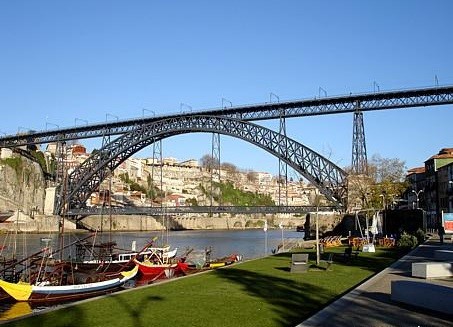
|
|
DOM LUIS BRIDGE
An Ironwork Showpiece
Porto's iconic bridge opened in 1886, when it held the record for the longest iron arch in the world. Today the metro crosses the upper level, while the lower level is used by cars and pedestrians to cross the river between the center of Porto and the spectacular city views and port wine warehouses of the municipality of Vila Nova de Gaia.
There are four other bridges in the city, best seen on a Douro River cruise. The most famous of all is the impressive Dona Maria Pia Bridge, also an iron railway bridge, completed in 1876. Designed by Gustave Eiffel before he built the famous Paris tower, and named after King Luis I's wife, it held the world record for the largest span for seven years. It remained in service until 1991 but today it stands as a national monument (it has also been designated an "International Historic Civil Engineering Landmark" by the American Society of Civil Engineers).
The other bridges are Ponte do Infante (whose central 280-meter reinforced concrete arch is the world's longest), the triple-arched Ponte de São João, and Arrabida Bridge - the least attractive of the city's bridges, but representing a mean feat of engineering: spanning 270 meters, and supported by a single arch. It was the largest reinforced concrete bridge when inaugurated in 1963.
|
|
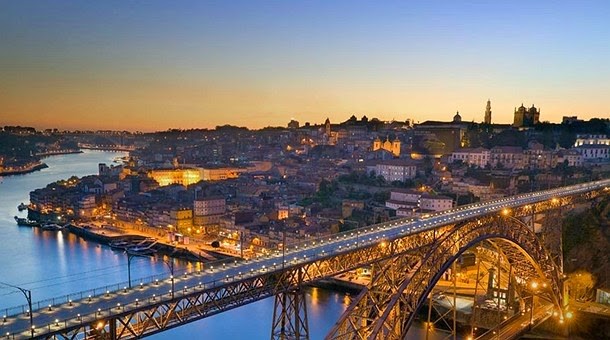
|
|
CAIS DA RIBEIRA
The Soul of Porto
The alluring district of Ribeira is made up of medieval streets and seedy alleyways. It is a crumbling but fascinating place, ending at a riverfront square "Praça da Ribeira".
With photogenic traditional boats floating at the quayside overlooked by colorful ancient houses, this is the most picturesque spot in the city and the place everyone loves - UNESCO did too, and declared it a World Heritage Site.
Have a refreshing drink and take in the unique atmosphere, and return at night when it is especially lively. There are dozens of cafés, bars, and restaurants sheltered under medieval arches, making it the most popular district in the city for eating and drinking.
The entire city seems to come by on feast days (especially on Saint John's Day every June and on New Year's Eve) to watch the major fireworks shows.
In the center of the square is a bronze cube surrounded by café tables, and just around the corner on Rua da Alfândega is "Casa do Infante" (or "House of the Prince"), where Prince Henry the Navigator was born in 1394.
Over the years the building also served as the city's customs house, and now contains the city archives, including the document of Prince Henry's baptism, and other articles and manuscripts related to the history of Porto.
From Ribeira you can also see the series of Port Wine houses across the river, as well as the attractive Cais de Gaia riverfront.
|
|
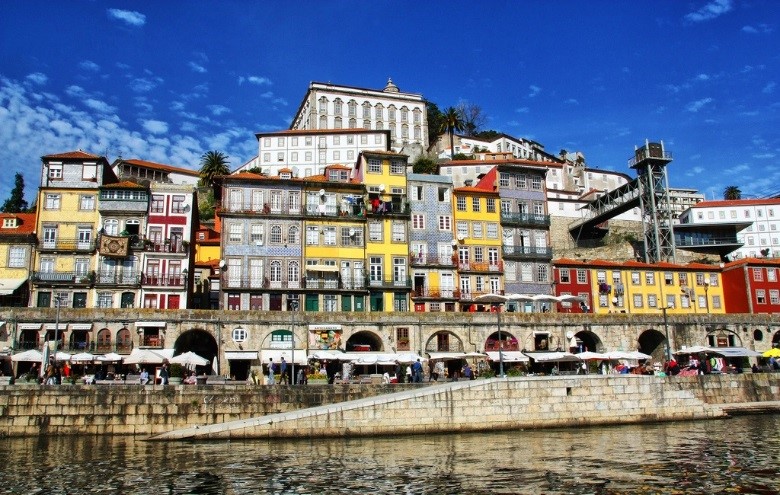
|
|
LIVRARIA LELLO – THE BOOKSHOP
The Magical Bookshop Straight Out of a Harry Potter Scene
After a coffee at one of downtown esplanades, look for the Lello bookshop. Situated in Carmelitas street, this bookshop was considered the third most beautiful bookshop in the world by the British newspaper The Guardian. Its iconic staircases are thought to be the first example of use of concrete in Portugal.
In the first years of its life the bookshop inaugurated in 1906 was named Chardron – the original name is still held on the frontage, because its founders, Lello brothers, wished to maintain the publisher's name they had bought together with the space.
Lello has already been the scenario for cinema, having been closed for two days for the shooting of "Baker Street Xangô" (2001), a film based on the novel of the Brazilian humorist Jô Soares.
At another time, it was once almost robbed by a priest. The priest had already put the first volume of a philosophy book in his suitcase when the bookshop assistant politely warned him that he had forgotten the second volume… The man went back and fetched the volume which was missing and paid for both.
The owners don't usually allow tourists to take photos inside the shop, but they sometimes make an exception. You should prepare an irrefutable argument.
|
|
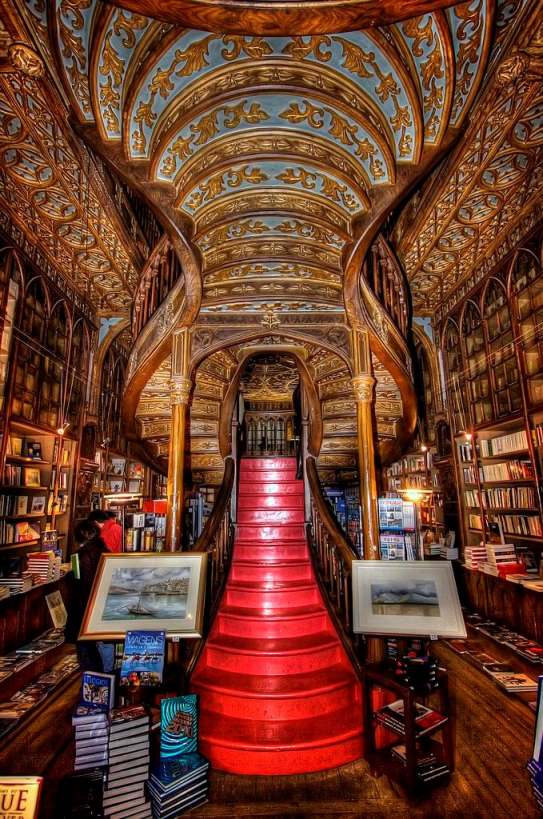 |
|
PALÁCIO DA BOLSA
Porto's Exuberant "Reception Room"
The Palácio da Bolsa (Stock Exchange Palace) is one of the most important historic monuments in Porto and one of the sights that must definitely be on the list of all visitors to the city.
It was built in the second half of the 19th century in the neoclassical style and was destined to become the headquarters of the Porto Commercial Association, which reflects the importance of this activity in the city's history. The building began to be used as the Stock Exchange at the orders of the queen Dona Maria II in 1841, although it was handed back to the Association in 1911.
Designed by the Porto architect Joaquim da Costa Lima Júnior, the building is quite remarkable in architectural terms, making unmistakable references to English Palladianism and other buildings in the city, such as the Hospital de Santo António designed by John Carr, the Academia da Marinha e Comércio (Naval Academy) by Carlos Amarante (the present-day Science Faculty) and the Feitoria Inglesa (Factory House) by John Whitehead.
Inside, it is worth visiting the Pátio das Nações (the main courtyard) and the magnificent Salão Árabe (Arabian Hall). Neo-Moorish in style, this is a unique space of great decorative wealth created by Gonçalves e Sousa in 1862. It was here that the most important official ceremonies in the city were once held, with receptions being organized for many of the world's leading statesmen. It is now used for cultural events.
|
|
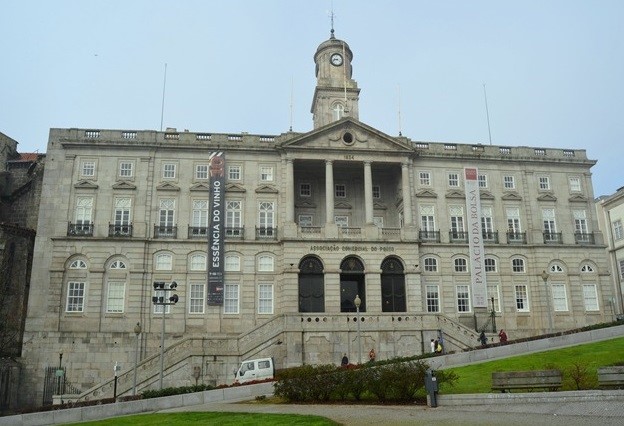 |
|
CLERIGOS TOWER
Overlooking the City from its Iconic Landmark
Overlooking the City from its Iconic Landmark
Clérigos church tower was the tallest structure in Portugal when completed in 1763 (the national record is now Lisbon's Vasco da Gama Tower), and as the main feature of the city's skyline, ships used it as a guide when coming into Cais da Ribeira.
It's a remarkable baroque landmark designed by the Italian architect Nasoni, who also designed the adjoining church. It has become a popular tourist attraction for the aerial view of the city from the top (76 meters up - after a steep flight of 240 steps). Inside the church, the highlight is a polychromatic Baroque-Rococo marble retable.
Opposite the tower is Cordoaria Gardens and an imposing Neoclassical and Pombaline building that is the city's former prison. The ground floor houses a photography museum with both permanent and temporary exhibitions. The collection includes the works of a Scotsman named Frederick William Flower who spent much of his life in Porto in the 19th century, and who photos (many of them of Porto) are Portugal's oldest.
From here it is possible to see the monumental Santo Antonio Hospital, classified as a national monument for being a remarkable example of 18th century Neoclassical architecture.
|
|
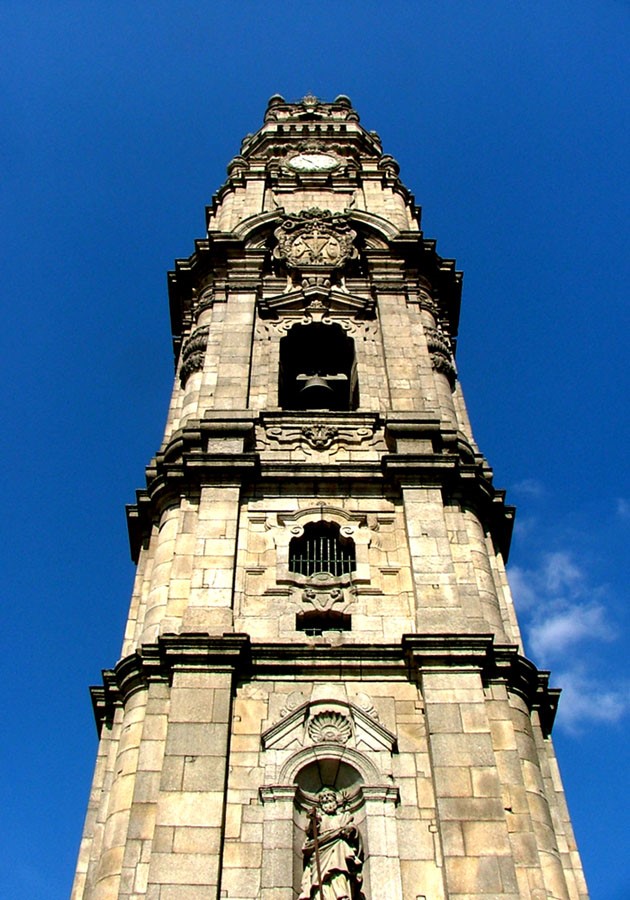 |
|
CASA DA MUSICA
Porto's Architectural Marvel
Casa da Musica, this twelve-storey, irregular-shaped building was designed by world-renowned architect Rem Koolhaas exclusively for musical performances.
It opened in 2005 and for admirers of architectural marvels it justifies a visit to Porto on its own.
The striking white concrete structure is an inventive building. Inside the 1,300-seat auditorium of perfect acoustics is a baroque organ pinned to the wall, and the VIP room has hand-painted blue tiles, blending contemporary minimalism with traditional touches.
Top international orchestras have already played here, and there is also a resident company. On the top floor is one of the most sophisticated restaurants in the city.
From outside some have described the building as looking like a meteorite landed in the middle of the city. It's located on the city's main avenue (Avenida da Boavista that stretches for 7km toward the sea), on a roundabout that is overlooked by a column bearing a lion and a flattened French eagle - a monument that celebrates the victory of the Portuguese and British in the Peninsular War.
|
|
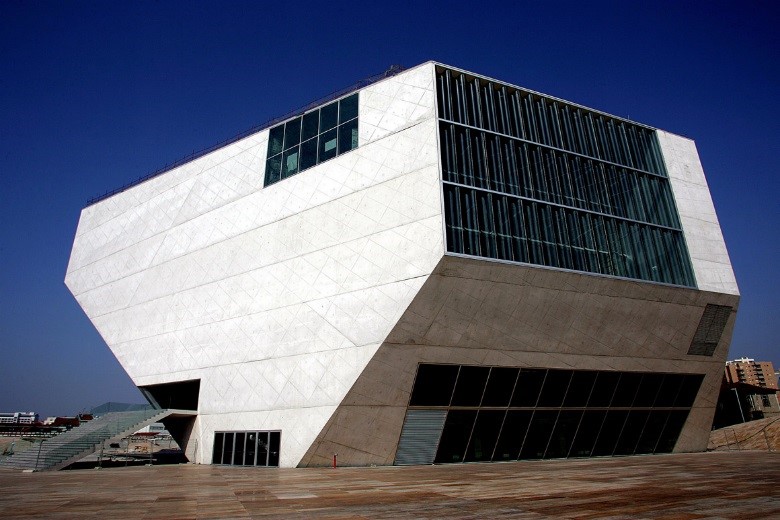 |
|
SÉ DO PORTO
Porto's Fortress-like Cathedral
Porto's austere fortress-like cathedral is where Prince Henry the Navigator was baptized and where King John I married the English Princess Philippa of Lancaster in the 14th century.
The building has its origins in the 12th century, although it underwent many alterations over time.
The Gothic rose window is the only part of the original façade that remains, especially after Baroque alterations in the 18th century.
The loggia on the north front was added at that time, as was the extraordinary altarpiece inside, entirely made up of silver.
The Gothic cloisters are more outstanding than the church itself, covered with magnificent blue and white tiles from the 18th century.
Also worth a visit is the dazzling chapterhouse and its collection of sacred art.
Before going inside, contemplate the fine views over the rooftops of old Porto from the terrace, and admire the grandiose three-storey façade of the Episcopal Palace whose interior cannot be visited.
Although the cathedral is the city's largest church, the most impressive church in Porto is São Francisco Church which has a magnificent golden interior which should not be missed by anyone visiting the city.
|
|
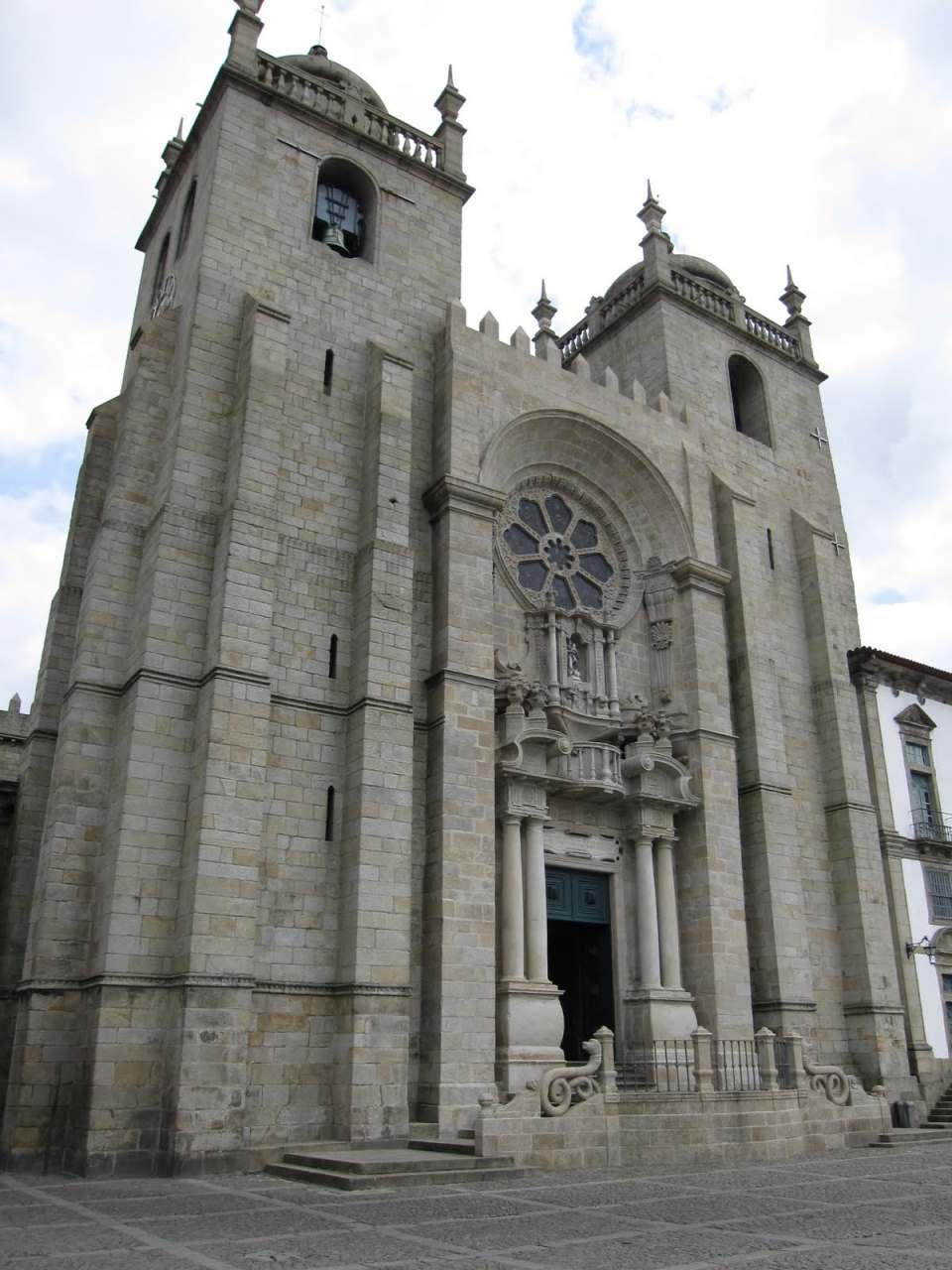 |
|
SÃO BENTO RAILWAY STATION
The São Bento Railway Station and the Light of Late Afternoon
The S. Bento Railway Station was built at the beginning of the twentieth century on the exact location of the former Convent of S. Bento de Avé-Maria. The glass and iron structure was designed by the architect Marques da Silva. The vestibule is adorned with twenty thousand tiles painted by Jorge Colaço that illustrate the transport evolution and events of Portuguese history and life., and in its lobby, huge panels of painted tiles depicting scenes from the history of northern Portugal can be seen.
There is a time in which the station is even more beautiful which is in the late afternoon of a sunny day...
|
|
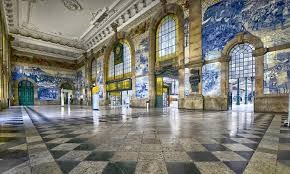
|